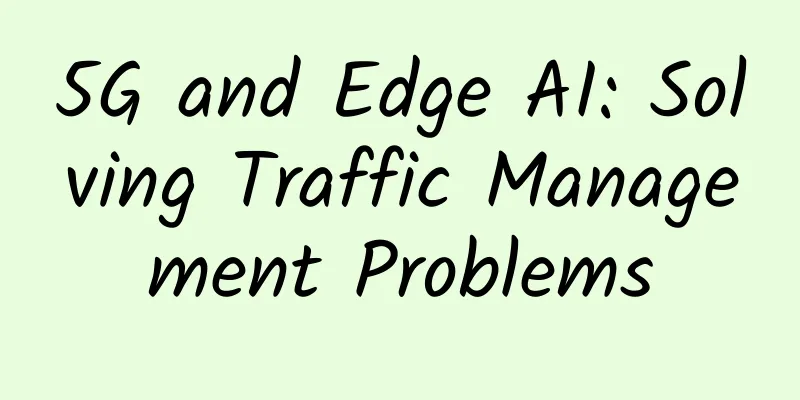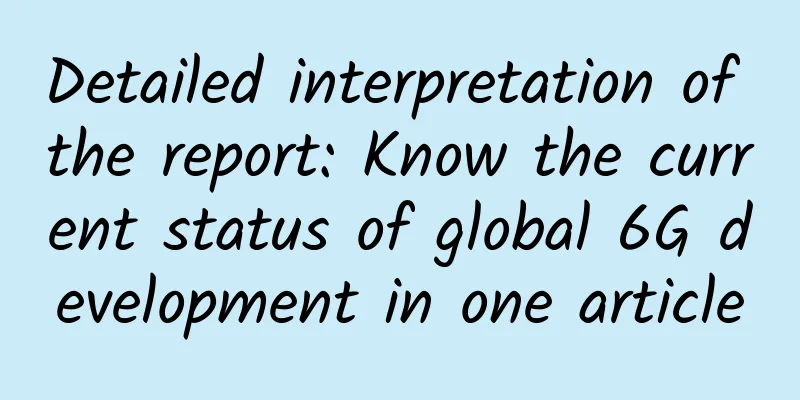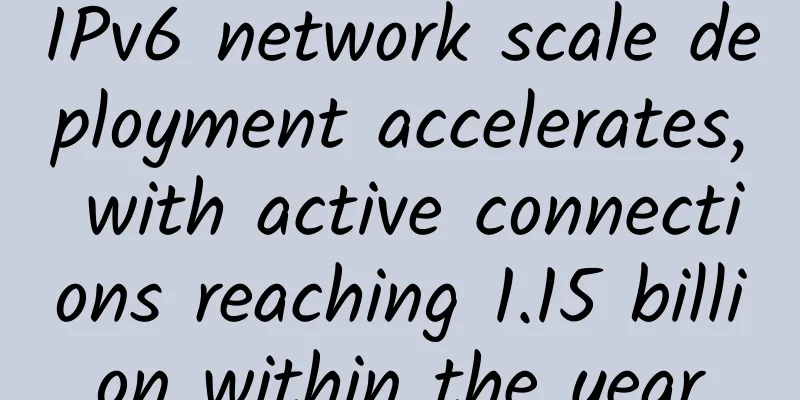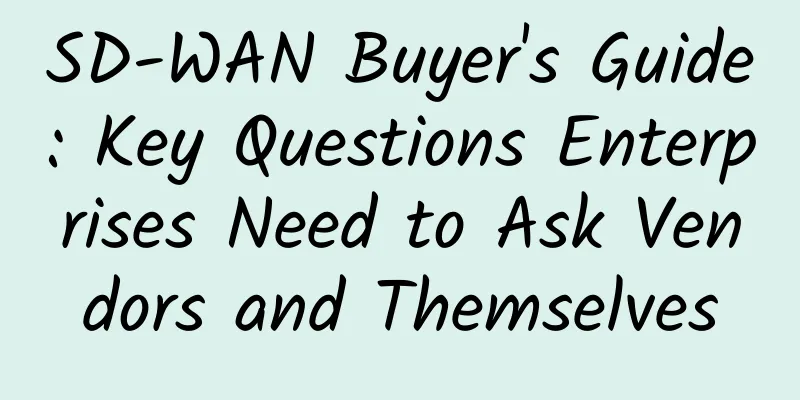Come to HC to see Huawei "unlock" the "efficient model" for government and enterprises to move from operation and maintenance to operation
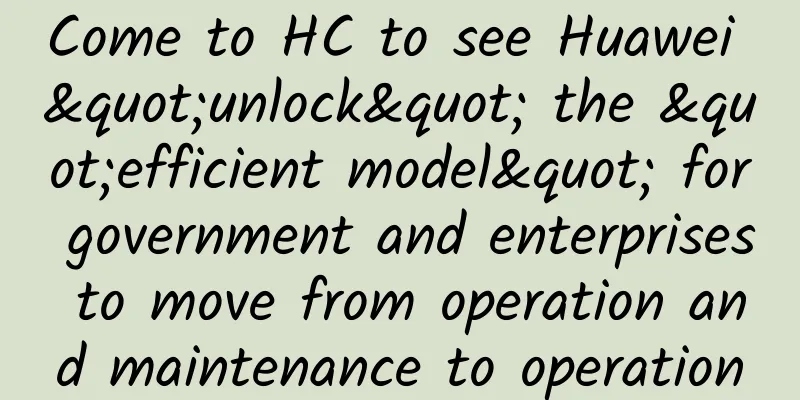
|
[51CTO.com original article] The digital transformation path for Chinese government and enterprise users has never been so "timely, geographical and human" as in 2020. From the "new infrastructure" wave promoted from top to bottom at the national level, to the new social normal emerging in the post-epidemic era, to the increasing attention and acceptance of emerging technologies by all members of society, the future of digital transformation for government and enterprises is infinitely bright, and success seems to be just around the corner. But just as logistical supply capabilities determine the range of operations and combat endurance of combat troops, when government and enterprise users are full of confidence and hope to achieve value reshaping with the help of digital transformation, digital operation and maintenance capabilities have become an insurmountable hurdle. The army must be prepared before the food and fodder is ready, and operation and maintenance work cannot be considered later Take a smart city in China as an example: In the government affairs system of this city, because of the early start of informatization, it has always been "focused on construction and neglected operation and maintenance". Different commissions and bureaus plan and build separately. On the one hand, there is a serious phenomenon of duplication of construction. On the other hand, their respective systems are fragmented, data integration is difficult, and management and operation and maintenance are very difficult. In addition, after years of development, many existing network devices are outdated, and their performance and reliability have been greatly reduced. In the new infrastructure boom, city managers find that embracing digitalization is somewhat beyond their ability - they can neither completely abandon the original infrastructure nor deposit the capabilities accumulated since the construction of the smart city into the new digital platform, and the difficulty of operation and maintenance management is too high. Not only in smart cities, the ICT equipment of most domestic government and enterprise users is of various types and huge in number. The operation and maintenance personnel with limited manpower must not only operate traditional IT equipment such as hosts/servers, virtual machines, middleware, switches, and routers, but also manage emerging equipment such as IT monitoring, AIOps intelligent operation and maintenance, security management, etc. It can be foreseen that if government and enterprise users do not take operation and maintenance work into consideration in the initial digital transformation planning stage, it will be difficult to realize the true value of digitalization. Government and enterprise users move from "operation and maintenance" to "operation" Huawei believes that the best way to solve the pain points of operation and maintenance in the government and enterprise industries is to build a unified operation and maintenance platform similar to the operation and maintenance brain. This platform can solve a series of problems such as insufficient operation and maintenance personnel, lack of professionalism, siloed system operation and maintenance, and high degree of business complexity and correlation. In the long run, the benefits of a unified operation and maintenance platform are obvious. It allows operation and maintenance to shift from the traditional equipment-layer operation and maintenance perspective to an end-to-end business perspective, which coincides with the most important business transformation in the digital upgrade of government and enterprise users - managers can understand information including business quality, application performance, basic software and hardware performance status, IT service management, and service processes from a more intuitive perspective, so as to respond in a timely manner and make quick decisions. By deploying Huawei's Shennong unified operation and maintenance platform, government and enterprise departments can not only manage data centers, cloud platforms, application software and other resources in a unified manner, but also see the usage of various system resources at a glance through a visual screen. More importantly, government and enterprise departments can also form six major capabilities, including active monitoring to discover problems, locate faults and restore services, standardize systems to ensure information security and improve operation and maintenance efficiency, consolidate experience sharing knowledge base, and move from operation and maintenance to operation. For most government and enterprise users, operation and maintenance is a long process. Even after the successful digital transformation, managers still have to face the problem of how to maintain global insight and the ability of intelligent linkage in various links in a long-term and stable manner. Therefore, moving from "operation and maintenance" to "operation" is an inevitable trend. IOC operation support helps smart cities operate efficiently The reason why Huawei has a deep understanding of the development trend of operation and maintenance in digital transformation is that Huawei itself is a beneficiary of digital transformation. Huawei is also constantly "feeding back" its understanding of "intelligence" to the construction of smart cities. From a long-term development perspective, the management of urban IOC must have strong reliability and operational support capabilities. Compared with government and enterprise users, the scope of smart city operation and maintenance is larger and more demanding. It must not only be combined with business and application scenarios, but also continuously feed back the massive data collected to decision makers to help them optimize urban management. In this regard, Huawei recommends that decision makers adopt a "business + technology" joint construction model, gather data in the fields of government services, economic operation, ecological environment, public safety, health care, culture, sports and tourism, and carry out situational awareness and big data analysis applications to support leadership decision-making. Let's take a look at what surprises such operations can bring to smart cities: Commissions, offices and bureaus can visualize business status. Through dynamic monitoring, relevant departments can understand the bottlenecks, difficulties and pain points that people often encounter when handling business, so as to make more targeted adjustments. In addition, different departments can realize linkage mechanism and data sharing. Once illegal behaviors are collected through urban monitoring, they can be quickly located, enforced and punished, and executed in a unified manner. At present, Huawei's urban IOC operation support service solution plays an obvious role in the process of building smart cities, helping customers successfully build an end-to-end operation support system, increasing the utilization rate of business topics by 60%, and improving the data asset quality of the city brain by nearly 30%, which stably and efficiently supports the operation of the city. On September 23, Huawei Connect 2020 will kick off at the Shanghai World Expo Center. We sincerely invite all ICT practitioners to discuss the future development of digital operation and maintenance in the industry! [51CTO original article, please indicate the original author and source as 51CTO.com when reprinting on partner sites] |
Recommend
Yecao Cloud: Hong Kong special cloud server annual payment starts from 138 yuan, independent server monthly payment starts from 399 yuan
Yecaoyun, a Chinese VPS host, has released a new ...
What factors determine the price of HTTPS certificates?
In the era of big data, when information is trans...
Ten ways for Vue.js parent-child component communication
[[266702]] Interviewer: What are the ways for par...
LOCVPS launches 1Gbps port VPS in Hong Kong, 20% discount, monthly payment starts from 36 yuan
LOCVPS launched a 1Gbps port Hong Kong VPS host b...
5G packages are cheaper, with the price per GB of traffic reduced to 4.4 yuan: Do you meet the requirements?
In November 2019, when 5G was officially commerci...
Network protocols TCP and UDP
First of all, I want to emphasize that the TCP/IP...
Bryan to launch fiber optic internet service
The city of Bryan, Texas, recently announced that...
Maxthon Host: Germany CU2 low latency large bandwidth 20% off, 2GB memory package monthly payment 60 yuan
Maxthon Hosting has been very low-key for a long ...
UCloud Summer Big Offer: Kuaijie Cloud Server starts from 47 yuan/year, price guaranteed for Double 11
UCloud has recently launched a global cloud servi...
PoE Troubleshooting Guide: Common Problems and Solutions
Power over Ethernet (PoE) is a revolutionary tech...
Let's talk about viewing ServiceEntry injection information in Envoy
[[431019]] introduction Istio provides ServiceEnt...
DotdotNetwork: $19/month - 2 cores, 16G memory, 30G SSD, 4TB/10Gbps bandwidth, Los Angeles data center
Recently, I received a submission from DotdotNetw...
5G is not yet popular, but 6G is coming: Tsinghua University experimented with 6G at the end of last year, led by the vice president
Domestic 5G construction is still in full swing, ...
DesiVPS: 10Gbps bandwidth VPS starts at $17 per year, 1Gbps unlimited traffic VPS starts at $19 per year, San Jose data center
DesiVPS recently sent some promotional packages, ...
Why do many colleagues recommend Ether IPL? Until this hospital expansion...
By Jin Gang, Chief of Information Department, Thi...

